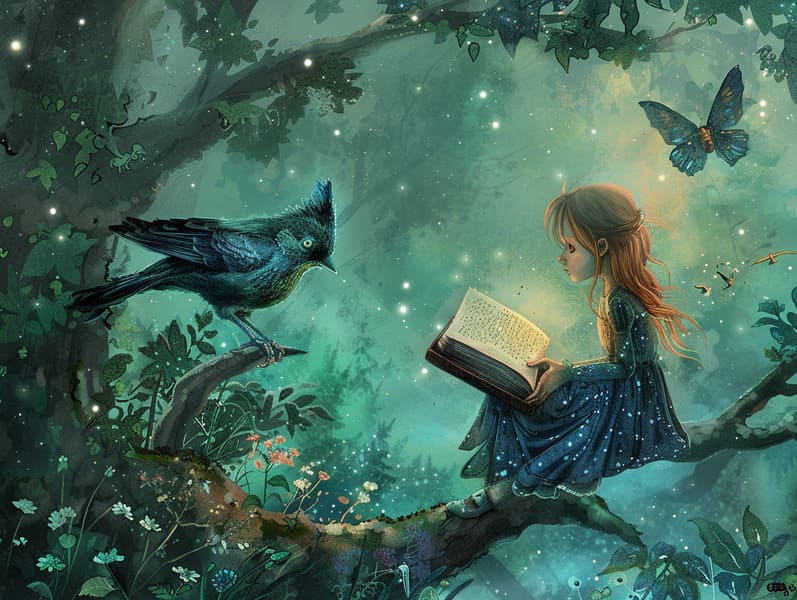The Origins of Fairy Tales and Their Continued Grandeur.
The Origins of Fairy Tales and Their Continued Grandeur.
Blog Article

Legendary fairy tales have legendary status. These narratives have been spoken from one generation to the next centuries before they were ever published. They were born from a variety of societies, including European traditions. They were initially passed along among grown-ups, often carrying themes and messages aligned with the societal norms and beliefs of the time.
The famous Grimm duo, the two Grimm brothers, were among the first to compile and release many of these beloved tales. Their compilation, "Grimm's Folk Tales," included tales like "Cinderella," "The Bread Crumb Trail," and "Schneewittchen," which have since become essentials in the world of timeless fairy tales. Similarly, Hans Andersen's delightful stories, such as "The Mermaid's Tale," and "The Little Duckling," have stolen hearts worldwide, ensuring their place in the pantheon of beloved fairy tales.
Despite being ancient, these tales remain as important as ever, especially as children's night stories. These whimsical stories are now available in diverse formats, including vividly illustrated books, charming animations, and free fairy tales online.
Their enduring popularity can be linked to several whimsical characteristics:
Vital Lessons: Timeless fairy tales often illustrate important moral lessons. Fairy tales like "The Shepherd Boy and the Wolf" teach the benefit of truthfulness, while "The Tale of the Tortoise and the Hare" show the benefits of perseverance and meekness. These tales offer the young clear distinctions between virtue and vice, forming their moral compass in a subtle yet meaningful way.
Sympathy and Perception: Old fairy tales frequently portray heroines facing trials and tribulations, prompting listeners to identify with their struggles and support their triumphs. For instance, "Beauty and Her Beast" shows us the virtue of looking beyond appearances to realize the inner spirit of a individual, fostering perception and understanding.
Cultural Recognition: Many fairy tales are infused with the cultural contexts from which they developed. Discovering these tales can provide intriguing perspectives into different ways of life, nurturing a sense of cultural understanding and knowledge.
Inventiveness and Imagination: The whimsical elements in traditional fairy tales—supernatural elements—boost children’s innovations. These tales take readers to magical realms, awakening inventive ideas and a sense of magic that continues a lifetime.
Traditional fairy tales are not only delightful but also illuminating. They provide captivating tools in cultivating various mental and emotional abilities in young ones. When ancient fairy tales are spoken out loud, they nurture language skills by presenting new word meanings and sophisticated sentence structures. This practice also improves hearing abilities and concentration, as little ones remain attentive, looking forward to see what happens next.
Furthermore, conversing about the themes and characters of fairy tales can strengthen logical thinking and thinking skills. Children learn to notice patterns, guess what will happen, and comprehend cause and effect. These analyses also contribute to children express their thoughts and feelings, fostering their emotional intelligence.
In today’s digital age, the proliferation of online storybooks has made these narratives more accessible than ever. Internet resources and digital apps extend broad selections of famous fairy tales that can be viewed or listened on anytime, anywhere. Fairy tales voiced are particularly liked, providing an charming way for young ones to delight in these charming stories. Sound books and narrated videos transport characters and settings to life, often supplemented by spellbinding sound effects and tunes that heighten the storytelling journey.
The lasting allure of classic fairy tales lies in their ability to adjust to modern society while retaining their central values. Contemporary reinterpretations of these stories often showcase more varied characters and modern settings, making them accessible to today’s audience. However, the central morals of daring, generosity, and equity remain unchanged, continuing to reach readers of all ages.
Timeless fairy tales also offer a sense of security and closeness. They yield a structured narrative with a plain beginning, middle, and end, often concluding with the conclusion of conflicts and the triumph of good over bad. This constancy can be encouraging for kids, presenting a sense of stability in an always shifting world.
Timeless fairy tales continue to allure and educate new generations, maintaining their allure and significance in modern society. As kids' bedtime tales, they share a perfect blend of magic and knowledge, supporting moral values, empathy, and creativity. The best fairy tales to read online prevalence of internet fairy tales and the sought after status of fairy tales narrated assure that these classic stories remain available to new generations.
By conserving and communicating these fairy tales, we continue to celebrate the rich tapestry of lore and cultural heritage. Whether you are discovering a richly illustrated book, seeing a virtual collection, or playing an read-aloud story, the beauty of timeless fairy tales is always within reach. These tales illustrate of the unfading strength of storytelling and its ability to draw us together across centuries and lands.
Even if you are reading a gorgeously illustrated book, exploring a web-based library, or hearing an spoken story, the beauty of traditional fairy tales is always within reach.
These tales highlight of the perpetual magic of tales and its ability to tie us across time and space, making a tie that enchants and educates alike.